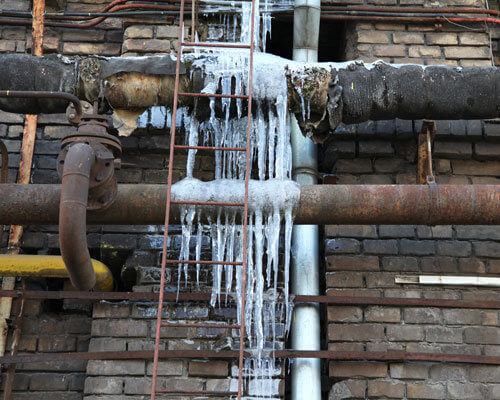Shielding Your Pipes from Cold Weather Damage: Critical Approaches
Shielding Your Pipes from Cold Weather Damage: Critical Approaches
Blog Article
Are you currently trying to find know-how involving 6 Ways to Prevent Frozen Pipes?

Cold weather can damage your plumbing, especially by freezing pipes. Below's how to stop it from occurring and what to do if it does.
Intro
As temperatures decline, the risk of frozen pipelines increases, potentially leading to expensive fixings and water damage. Understanding exactly how to stop frozen pipes is vital for homeowners in cool climates.
Prevention Tips
Protecting at risk pipes
Wrap pipelines in insulation sleeves or make use of heat tape to safeguard them from freezing temperatures. Concentrate on pipelines in unheated or outside locations of the home.
Home heating methods
Maintain indoor rooms properly heated up, particularly areas with plumbing. Open cabinet doors to allow warm air to circulate around pipelines under sinks.
Just how to recognize icy pipes
Search for decreased water flow from taps, uncommon odors or noises from pipelines, and noticeable frost on subjected pipes.
Long-Term Solutions
Architectural changes
Think about rerouting pipes far from exterior walls or unheated locations. Add extra insulation to attic rooms, cellars, and crawl spaces.
Upgrading insulation
Buy top notch insulation for pipes, attic rooms, and walls. Correct insulation helps keep consistent temperature levels and decreases the threat of frozen pipes.
Securing Outdoor Plumbing
Yard hoses and outside taps
Disconnect and drain pipes yard hoses before winter. Set up frost-proof faucets or cover outdoor faucets with protected caps.
Recognizing Frozen Pipes
What triggers pipelines to ice up?
Pipelines ice up when subjected to temperatures listed below 32 ° F (0 ° C) for prolonged durations. As water inside the pipelines ices up, it broadens, putting pressure on the pipe wall surfaces and possibly creating them to rupture.
Risks and problems
Icy pipes can result in water supply disruptions, home damage, and pricey repairs. Ruptured pipelines can flooding homes and create considerable architectural damage.
Signs of Frozen Piping
Recognizing icy pipes early can stop them from breaking.
What to Do If Your Pipes Freeze
Immediate actions to take
If you believe frozen pipes, maintain taps open to relieve stress as the ice melts. Make use of a hairdryer or towels soaked in warm water to thaw pipes gradually.
Conclusion
Protecting against frozen pipes calls for proactive procedures and quick actions. By understanding the causes, indicators, and preventive measures, house owners can protect their plumbing throughout cold weather.
5 Ways to Prevent Frozen Pipes
Drain Outdoor Faucets and Disconnect Hoses
First, close the shut-off valve that controls the flow of water in the pipe to your outdoor faucet. Then, head outside to disconnect and drain your hose and open the outdoor faucet to allow the water to completely drain out of the line. Turn off the faucet when done. Finally, head back to the shut-off valve and drain the remaining water inside the pipe into a bucket or container. Additionally, if you have a home irrigation system, you should consider hiring an expert to clear the system of water each year.
Insulate Pipes
One of the best and most cost-effective methods for preventing frozen water pipes is to wrap your pipes with insulation. This is especially important for areas in your home that aren’t exposed to heat, such as an attic. We suggest using foam sleeves, which can typically be found at your local hardware store.
Keep Heat Running at 65
Your pipes are located inside your walls, and the temperature there is much colder than the rest of the house. To prevent your pipes from freezing, The Insurance Information Institute suggests that you keep your home heated to at least 65 degrees, even when traveling. You may want to invest in smart devices that can keep an eye on the temperature in your home while you’re away.
Leave Water Dripping
Moving water — even a small trickle — can prevent ice from forming inside your pipes. When freezing temps are imminent, start a drip of water from all faucets that serve exposed pipes. Leaving a few faucets running will also help relieve pressure inside the pipes and help prevent a rupture if the water inside freezes.
Open Cupboard Doors
Warm your kitchen and bathroom pipes by opening cupboards and vanities. You should also leave your interior doors ajar to help warm air circulate evenly throughout your home.

I came across that piece of writing on How to Prevent Your Pipes From Freezing while looking around the internet. Sharing is nice. Helping others is fun. Kudos for being here. Please stop by our blog back soon.
Call Today Report this page